
Thanks to the
Bazaar effort of
The Guardian Project, I ve been offered a phone to test F-Droid and other free software apps for Android. I accepted the offer, and chose a Samsung Galaxy S III phone with
Replicant 4.2.2, installed and shipped by
Tehnoetic.
I m using it now as my main phone, and since it uses Android 4.x I m able to install more modern apps than in my old Galaxy Ace (which remains usable with CyanongenMod 7.2 (Android 2.3.7)).
My plans with this new phone are:
- Test Replicant and free software for Android on it
- Get more involved in translations of Android apps
- Get more involved in the F-Droid community
- Keep an eye on Android tools in Debian
- Post here in my blog articles about what I ve been doing (and of course report issues and contributions upstream)
Migration to the new phone
I ve migrated my stuff from the old phone to this one. Some notes:
- Wrote down my list of apps
- Used Slight Backup for contacts, call logs and messages
- Periodical has its own backup tool
- Whatsapp has its own backup tool
- Exported settings in K-9 Mail
- Exported Kontalk GPG key
- Simply Do has its own backup tool
- I don t use calendars in the phone so I didn t migrate any events (I have Offline Calendar to ad temporary notes/reminders, but that s all)
I moved the SIM card and the SD Card to the new phone and tried the restore tool for each app.
I found out that several apps could not find the backups because they were not looking at the SD Card for the files (seems that they were using internal memory locations). So for recovering my backups, I made new backups in the new phone with the empty apps, then found out where those backups were created (in the internal memory, /storage/emulated/0), and then copied the authentic backup files there (overwriting teh dummy ones), and then used the app to restore the backup.
For some apps (K-9) I had to set again the folder for attachments, since the SD was not anymore in /media/sdcard, now it was in /storage/sdcard1.
Apart from that, everything went well.
I was a bit upset that I could not migrate Kontalk conversations (there is no backup/export tool, and I am not sure where are the files/database stored).
I noticed that although Kontalk is registered using the phone number, and it uses the phone numbers for contacts, it kept working in the old phone (Whatsapp detects when you change to a new phone and kind of deactivates itself in the old one, but that s not the case for Kontalk: it works as any XMPP client (if it s open, it can send/receive messages)).
Replicant 4.2 in a Galaxy S III (i9300)
Here I write some particularities that I found in the phone, mostly bugs or problems. But don t get me wrong: overall I m very happy with it!
I experienced a problem when using the phone to make/receive calls, it seemed that the proximity sensor was not working well. I thought it was a Replicant issue, but later I realized that there was a Tehnoetic sticker that was partially covering the sensor. I removed the sticker and everything worked well.
The phone came with F-Droid installed which is nice. I upgraded to the latest alpha and I m testing the alpha releases since then

I found that I cannot choose where to install apps nor move apps from internal memory to the SD Card: there is no such option in Settings > Apps > Manage Apps (there is such setting in my CyanogenMod 7.2 phone, though). Since my phone is rooted and I have full access to both internal memory and SDCard, and I have plenty of room in the internal memory, I didn t bother too much. I m not sure if this is a bug, a feature, something related to Android 4 or specific to Replicant, o specific to this phone model. Pending to investigate, but low priority.
Replicant is almost fully translated to Spanish, yay!. I only found one untranslated string: You go to Settings > Wireless > Cell Broadcasts, and in the settings page, Cell Broadcasts is untranslated (but the settings themselves are). I still need to find where/how to send a patch for this (not sure if it comes from Android, CyanogenMod, or it s something specific for Replicant. Also, being Android 4.x, I m not sure about the usefulness of reporting such a minimal and unimportant patch upstream ).
When I turn on the phone, I get the Samsung S III splash screen, later the Replicant Splash screen, later the numeric pad to unlock the SIM card. After that, I see the screen lock but when I press the lock to enter the pattern, the screen turns off and on, screen lock appearing again (and I have to press the lock again to enter the pattern). If after unlocking the SIM card I wait a bit, I see the screen lock and again black screen and screen lock, so it s not my tap causing it. Doing like this (waiting a bit for the phone to show the screen lock for 2nd time) is less annoying, but I wonder why this happen and I cannot unlock the screen directly in the first attempt. This is also pending for research, but low priority.
When the phone boots, I find the splash screens too bright (the Samsung Galaxy S III splash, and later the red Replicant one). I don t know if I can change that. I know that other people have created different Replicant splash screens, so maybe I can create one almost black and only the Replicant text in very dark grey. But this is obviously a workaround, not a fix. OTOH, it s an annoying thing just some seconds: when the unlock screen is shown, the phone shows the brightness level that I ve set (usually, the lowest one).
From time to time, I suffer soft reboots:
- the phone hangs for 2-3 seconds
- then the red Replicant splash screen is shown (the phone is not totally rebooted, because I don t see the Samsung Galaxy S III splash screen and and the SIM card unlock PIN is not requested)
- after unlocking the screen, I see a normal desktop (similar to what I see after rebooting the phone: no apps running, and no last used apps history. Time and date are ok, wireless or 3G starts correctly etc).
I ve tried to track the causes of these soft reboots, but I couldn t find anything specific. They are not frequent at all, and when I decide to launch
CatLog to try to catch any hint, the phone works perfectly for hours or days :s
Replicant is currently using the fallback Android EGL implementation, which is incomplete. The missing features of this implementation cause multiple issues, which are described in
#705. These are the ones that I experience (or I miss):
- The phone comes with a video editor preinstalled: Movie Studio. I got excited about it, because I was jealous of the small built-in video editor that comes with Whatsapp, but I became sad because Movie Studio does not work

- The camera does not record video.
- When I long-press the central button of my phone to see the list of recent apps, I don t see their thumbnails (only the name, and their icons). This is quite unimportant for me, names and icons are enough.
- The stock Gallery app does not work well: I cannot see thumbnails of the albums. This is not very important, because I installed Gallery.
- I cannot use Firefox, Orfox and other derivative web browsers (I usually use the stock browser, and I installed Lightning too).
- I cannot use barcode or QR scanners.
- My son cannot play Shattered Pixel Dungeon (nor Pixel Dungeon). Fortunately he uses now my old Android 2.x devide for that.
I installed the
non-free firmware to be able to use Wifi and tethering, GPS and some other things. This does not fix the graphics problems listed above.
New apps, and translations
Note: when I write about Android apps, I usually link to their pages in the F-Droid website. Here I talk about translations (contributions), so I ll link to their original website or souce code repos. But you can find all those apps in F-Droid too.
As I told before, I installed another gallery app called
Gallery and submitted an update to it Spanish translation.
I installed
Red Moon to reduce (even more) the screen brightness. At night it s a relieve. Maybe the brightness of the splash screen is not so much, and I perceive them annoying because I got accostumed to Red Moon! I contributed some strings to the Spanish translation.
I liked
RadioDroid very much, and I translated the app to Spanish.
I translated
Wifi Privacy Police, and I used for some time, but I became tired that it keeps asking all the time that I walk across my workplace (multiple buildings within the same Wifi network, but quite a lot access points ).
I keep on contributing to
K-9 Mail to make it 100% translated to Spanish. Now with a modern Android I can move to the development branch (5.1xx releases), and just did it.
I submitted a Spanish translation to
DAVDroid, although I m not using it yet (I have to see if my University s Owncloud instance allows to sync contacts and calendar).
I updated the Spanish translation of
PassAndroid, although I don t use it yet (I tend to print my train/airplane tickets ). I keep it installed in my phone, just in case.
Other apps that I use
I m testing
OwnCloud,
NextCloud and
NexCloud Beta clients with my University s Owncloud and with
Davros in my Sandstorm box (with Davros, I could only make it work installing an old version of Owncloud/Nexcloud client, and then upgrading. See
#65).
I didn t get accostumed to
Conversations. Not sure why, though. Maybe it s just that I got accostumed to
Xabber-Classic, so I upgraded to
Xabber. It works like a charm, dark theme, and I can close it easily when I don t want to chat.
I got in love with
KDE Connect. Later I realized that I could have been using it in my Android 2.x phone since long
Sometimes I have fun activating
Voice Notification and entering the redeslibres XMPP multi user chat at salas.mijabber.es, for example while I m cooking in the kitchen (in that room people talk in Spanish and make many wordplays, mixing Spanish and English, and use tech slang, etc so it s really fun to hear the Spanish-TTS deal with the conversation there!).
More to come
As I told at the beginning of this long post, my plan is to keep on tinkering with the phone, testing and translating apps, and becoming more involved. So expect some more posts about Android in this blog, in the future.
For now, some big things in my TODO:
- Watching again some videos: DebConf16 videos about Android tools in Debian, FOSDEM talks about Replicant, and some other talks about free software in Android.
- I track the #fdroid and #fdroid-dev channels in IRC, but I m not very talkative there. I guess I could do more user support.
- Participate more in the F-Droid (client, server, data) issue trackers (I send reports when the alpha version crashes, and comment on few issues, but I don t triage the issue tracker to find issues that I could reproduce or help to diagnose or contribute to fix).
- Long time ago I learned to setup an Android development environment and build apps. I would like to re-learn and maybe do some small fixes in unmaintained or near unmaintained apps, and maybe adopt them or join their development teams (I m thinking, for example, in Puma, an Android client for pump.io network, the MediaGoblin app, or the DebianDroid app). And ship new versions of unmaintained apss, including Spanish translations.
We ll see how far I can go!
Comments?
Filed under:
My experiences and opinion,
Tools Tagged:
Android,
Debian,
English,
F-Droid 
 Reviving Very Old X Code
I've taken the week between Christmas and New Year's off this year. I
didn't really have anything serious planned, just taking a break from
the usual routine. As often happens, I got sucked into doing a project
when I received this simple bug report
Debian Bug #974011
Reviving Very Old X Code
I've taken the week between Christmas and New Year's off this year. I
didn't really have anything serious planned, just taking a break from
the usual routine. As often happens, I got sucked into doing a project
when I received this simple bug report
Debian Bug #974011
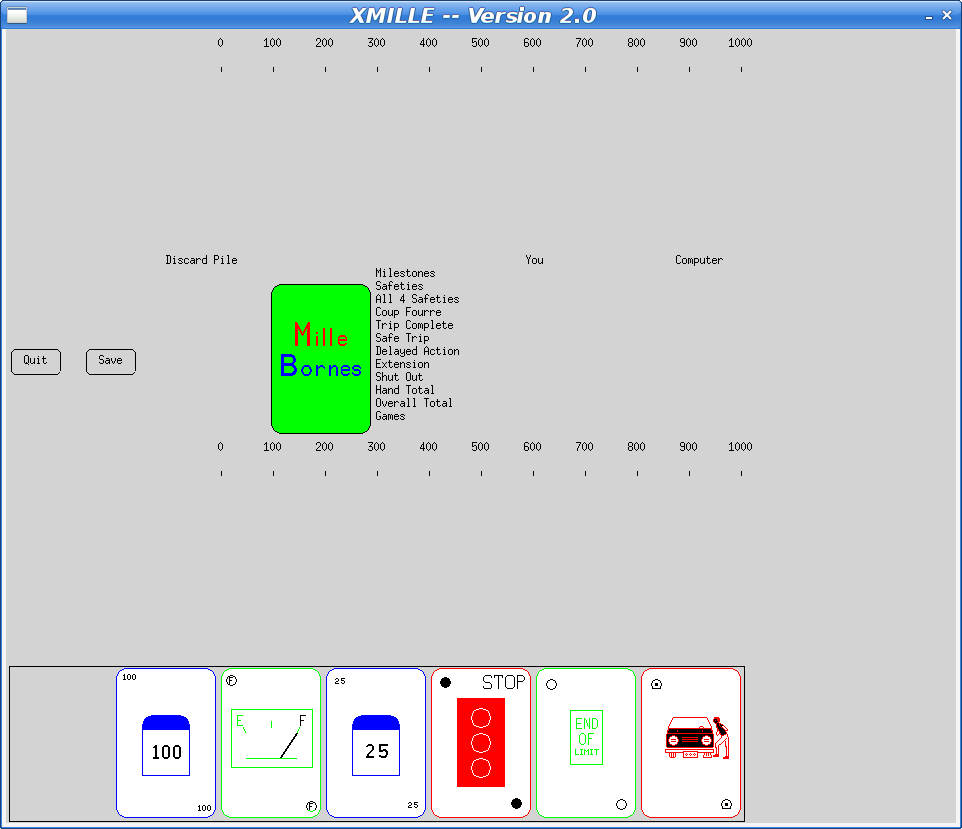 Fixing The Bug
To fix the missing copyright and license information, I imported the
mille source code into the "latest" Xaw-based version. The updated
mille code had a number of bug fixes and improvements, along with the
copyright information.
That should have been sufficient to resolve the issue and I could have
constructed a suitable source package from whatever bits were needed
and and uploaded that as a replacement 'xmille' package.
However, at some later point, I had actually merged xmille into a
larger package, 'kgames', which also included a number of other
games, including Reversi, Dominoes, Cribbage and ten Solitaire/Patience
variants. (as an aside, those last ten games formed the basis for my
Patience Palm Pilot application, which seems to have inspired an
Android App of the same name...)
So began my
yak shaving holiday.
Building Kgames in 2020
Ok, so getting this old source code running should be easy, right?
It's just a bunch of C code designed in the 80s and 90s to work on
VAXen and their kin. How hard could it be?
Fixing The Bug
To fix the missing copyright and license information, I imported the
mille source code into the "latest" Xaw-based version. The updated
mille code had a number of bug fixes and improvements, along with the
copyright information.
That should have been sufficient to resolve the issue and I could have
constructed a suitable source package from whatever bits were needed
and and uploaded that as a replacement 'xmille' package.
However, at some later point, I had actually merged xmille into a
larger package, 'kgames', which also included a number of other
games, including Reversi, Dominoes, Cribbage and ten Solitaire/Patience
variants. (as an aside, those last ten games formed the basis for my
Patience Palm Pilot application, which seems to have inspired an
Android App of the same name...)
So began my
yak shaving holiday.
Building Kgames in 2020
Ok, so getting this old source code running should be easy, right?
It's just a bunch of C code designed in the 80s and 90s to work on
VAXen and their kin. How hard could it be?
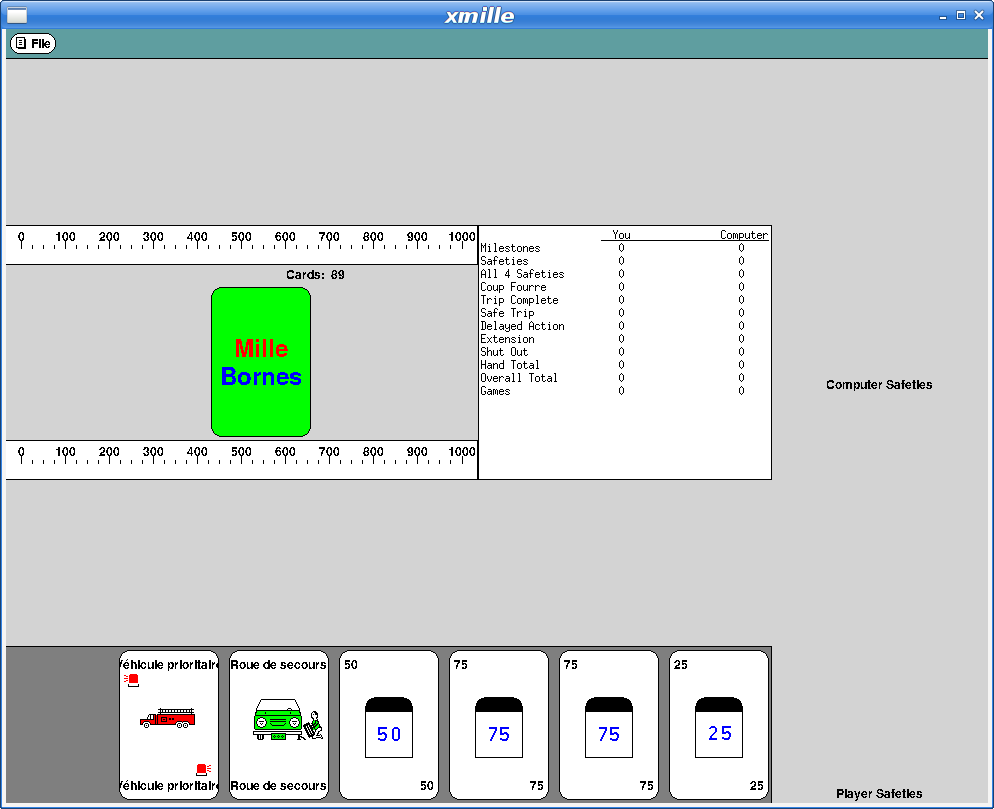 And here's my favorite solitaire variant too:
And here's my favorite solitaire variant too:
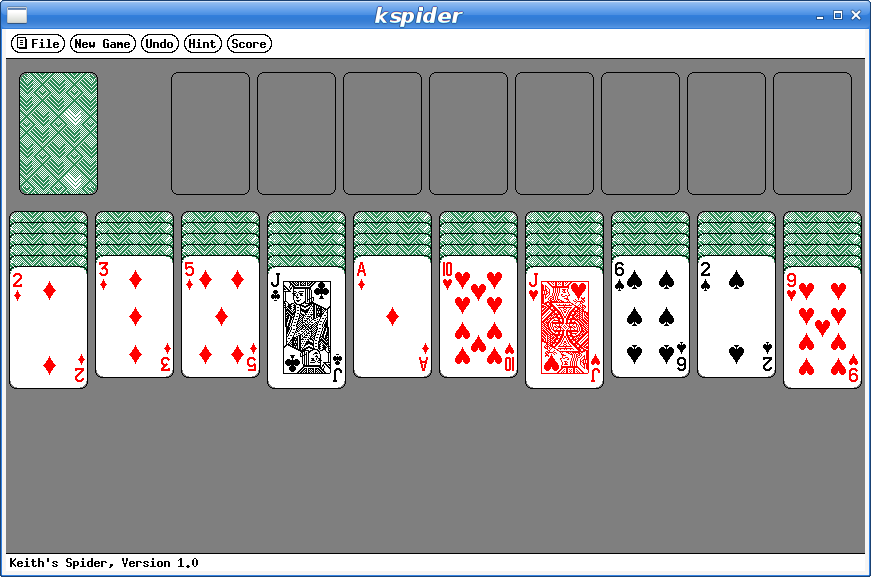 But They Look So Old
Yeah, Xaw applications have a rustic appearance which may appeal to
some, but for people with higher resolution monitors and well
seasoned eyesight, squinting at the tiny images and text makes it
difficult to enjoy these games today.
How hard could it be to update them to use larger cards and scalable
fonts?
Xkw version 2.0
I decided to dig in and start hacking the code, starting by adding new
widgets to the Xkw library that used cairo for drawing instead of core
X calls. Fortunately, the needs of the games were pretty limited, so I
only needed to implement a handful of widgets:
But They Look So Old
Yeah, Xaw applications have a rustic appearance which may appeal to
some, but for people with higher resolution monitors and well
seasoned eyesight, squinting at the tiny images and text makes it
difficult to enjoy these games today.
How hard could it be to update them to use larger cards and scalable
fonts?
Xkw version 2.0
I decided to dig in and start hacking the code, starting by adding new
widgets to the Xkw library that used cairo for drawing instead of core
X calls. Fortunately, the needs of the games were pretty limited, so I
only needed to implement a handful of widgets:
 I did replace the text in the images to make it readable, otherwise
these are untouched from what inkscape generated.
The Results
Remember that all of these are applications built using the venerable
X toolkit; there are still some non-antialiased graphics visible as
the shaped buttons use the X Shape extension. But, all rendering is
now done with cairo, so it's all anti-aliased and all scalable.
Here's what Xmille looks like after the upgrades:
I did replace the text in the images to make it readable, otherwise
these are untouched from what inkscape generated.
The Results
Remember that all of these are applications built using the venerable
X toolkit; there are still some non-antialiased graphics visible as
the shaped buttons use the X Shape extension. But, all rendering is
now done with cairo, so it's all anti-aliased and all scalable.
Here's what Xmille looks like after the upgrades:
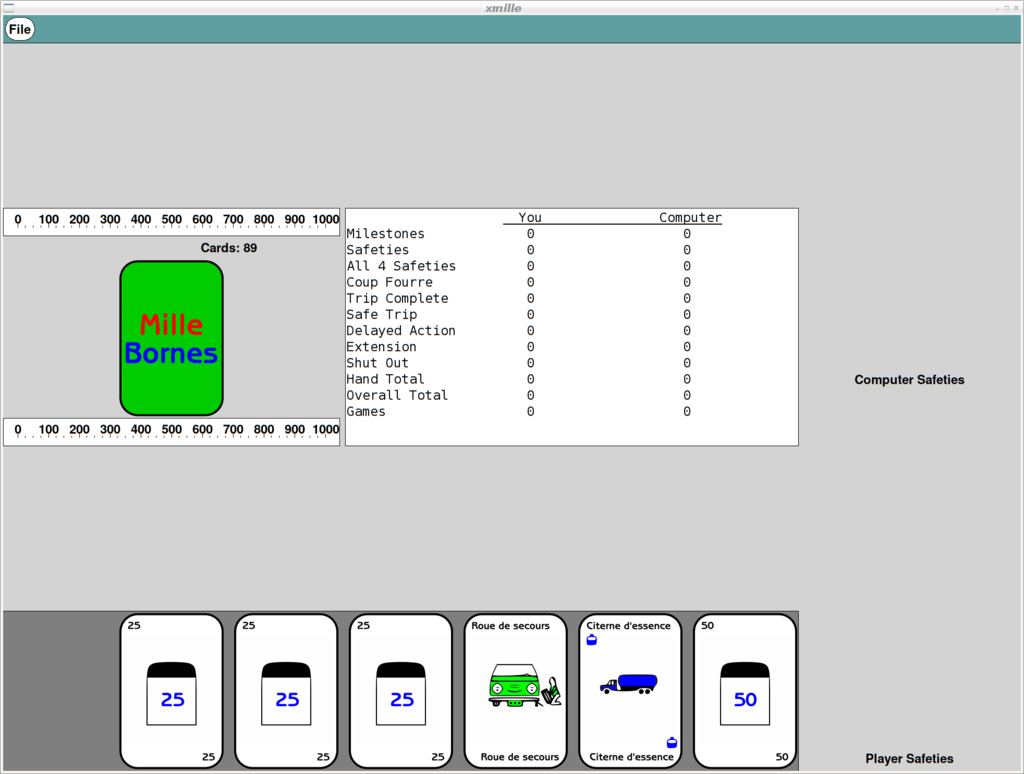 And here's spider:
And here's spider:
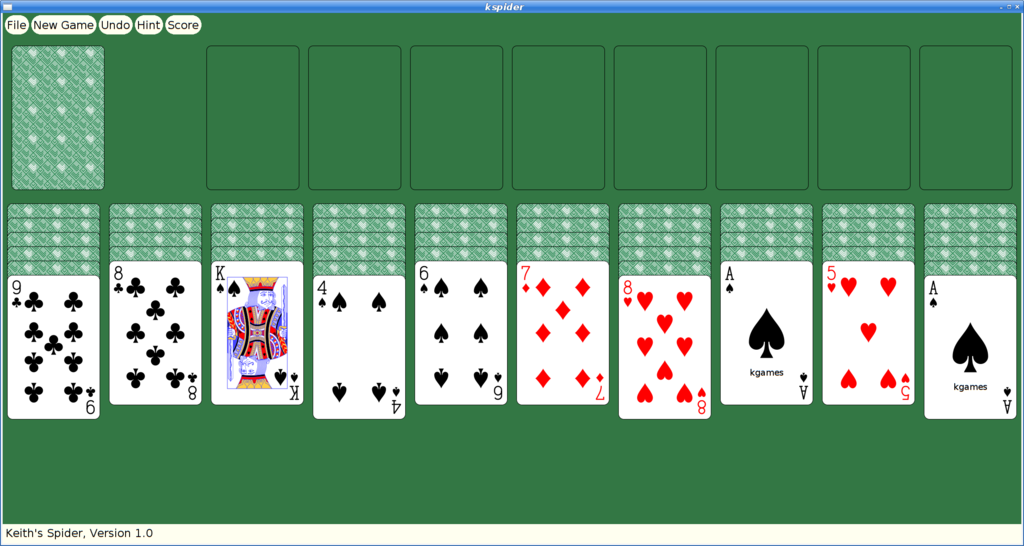 Once kgames 1.0 reaches Debian unstable, I'll upload these new
versions.
Once kgames 1.0 reaches Debian unstable, I'll upload these new
versions.

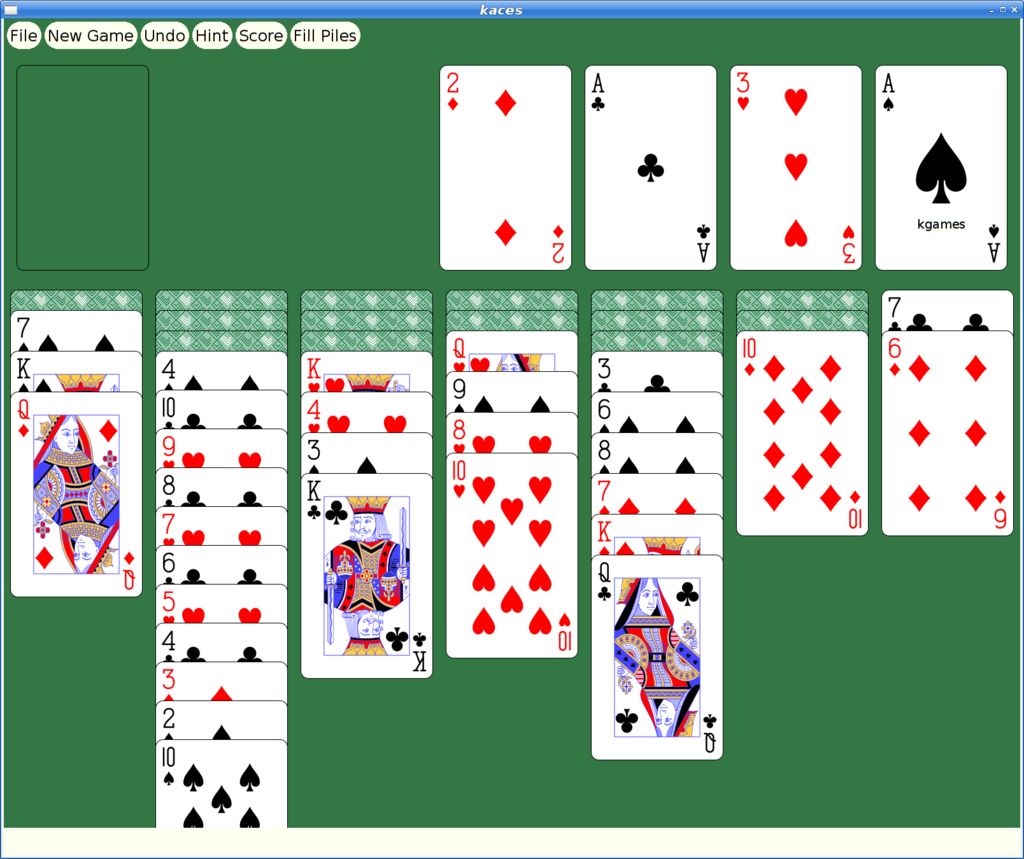
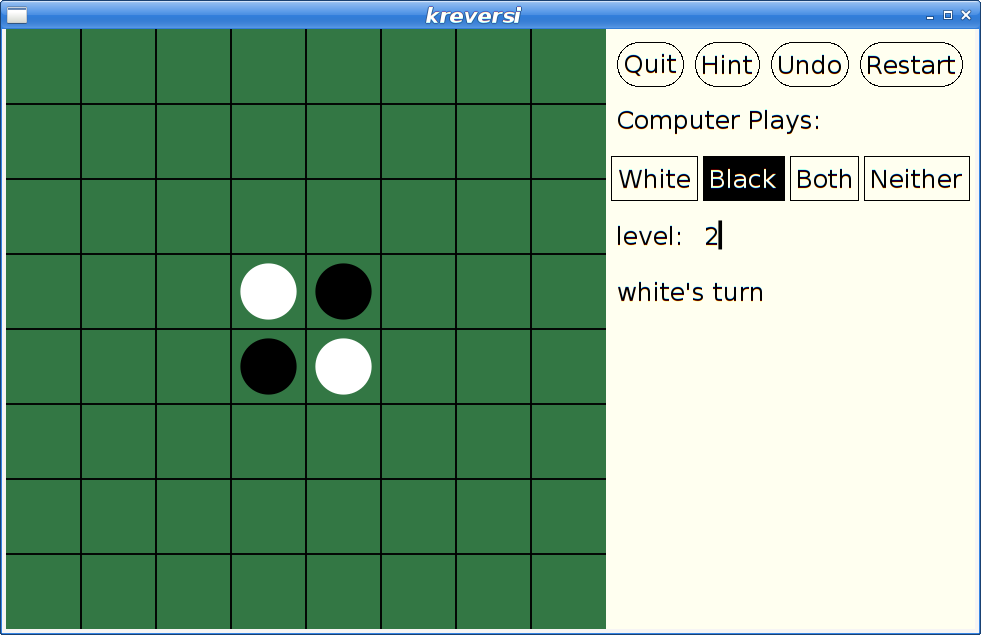
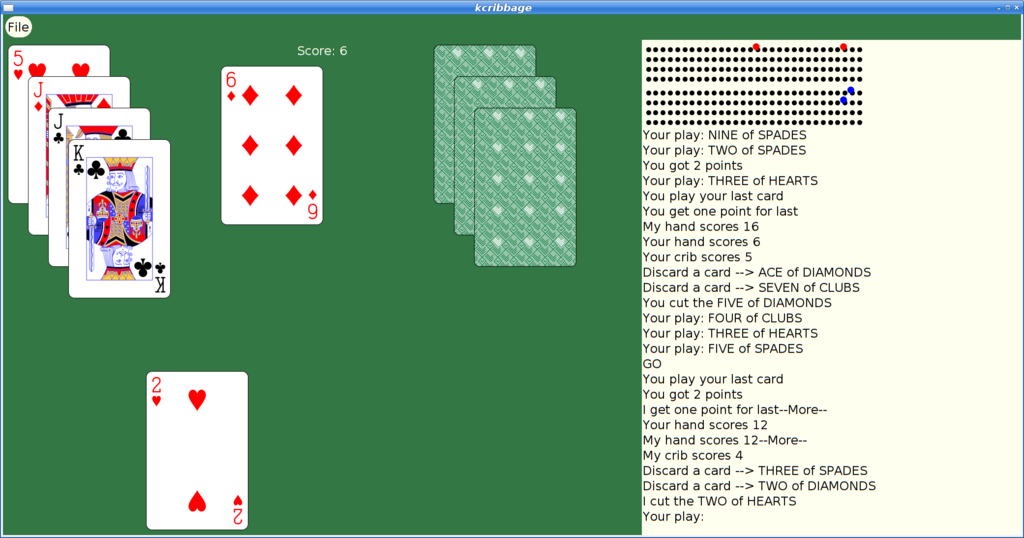
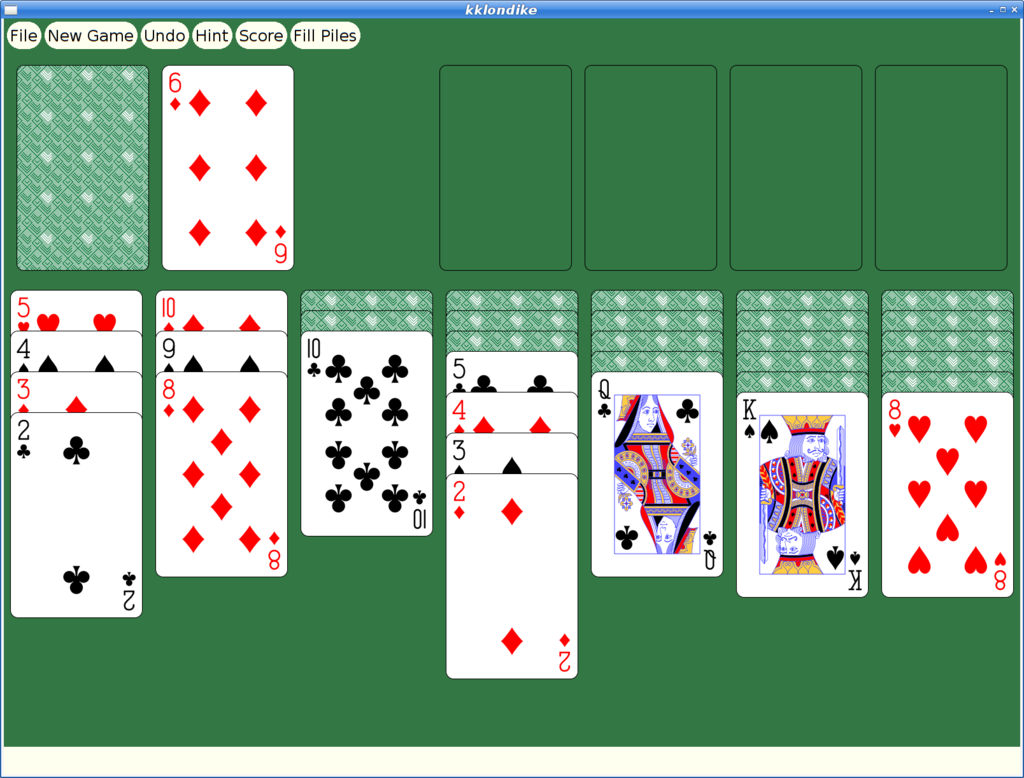

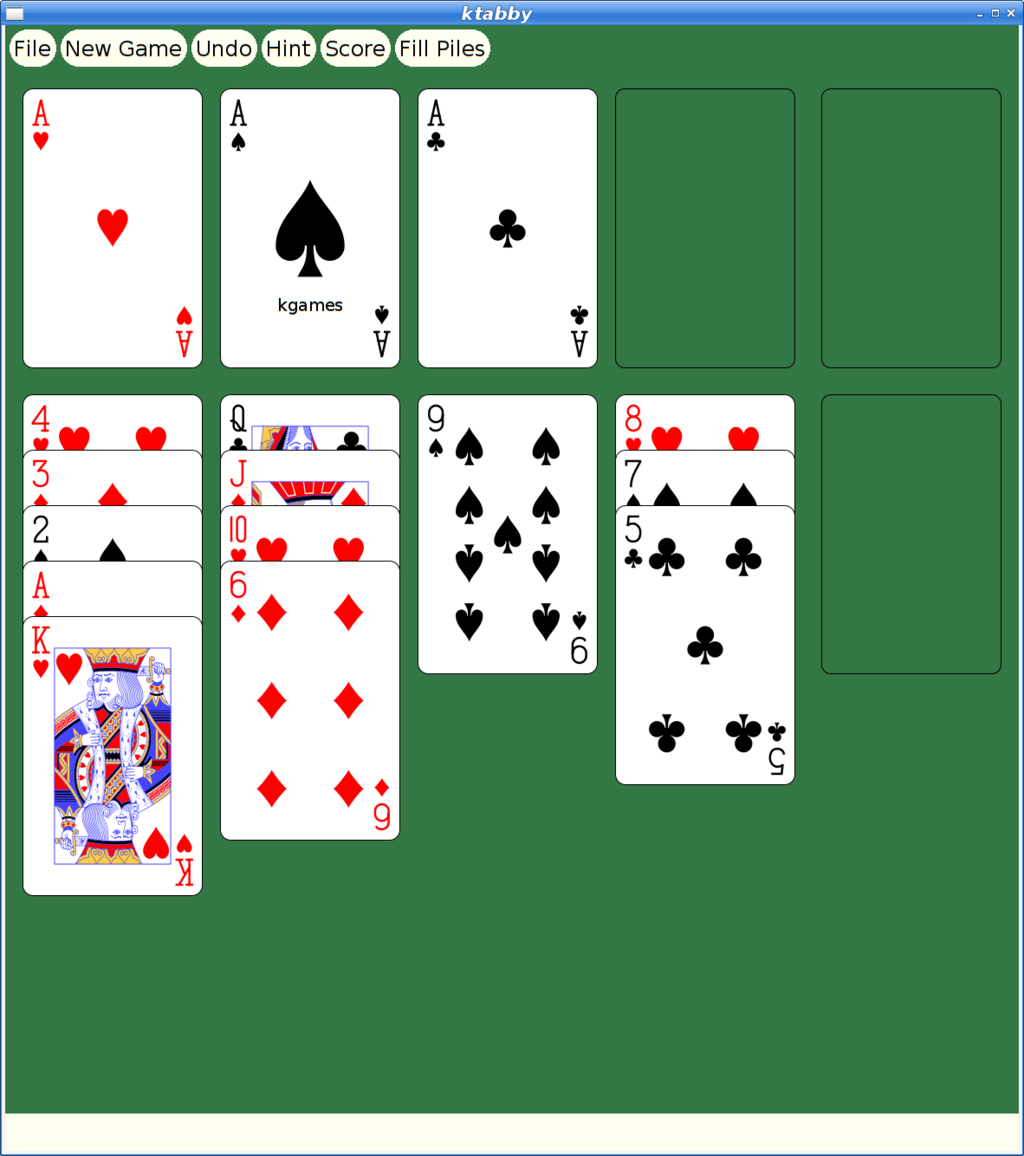
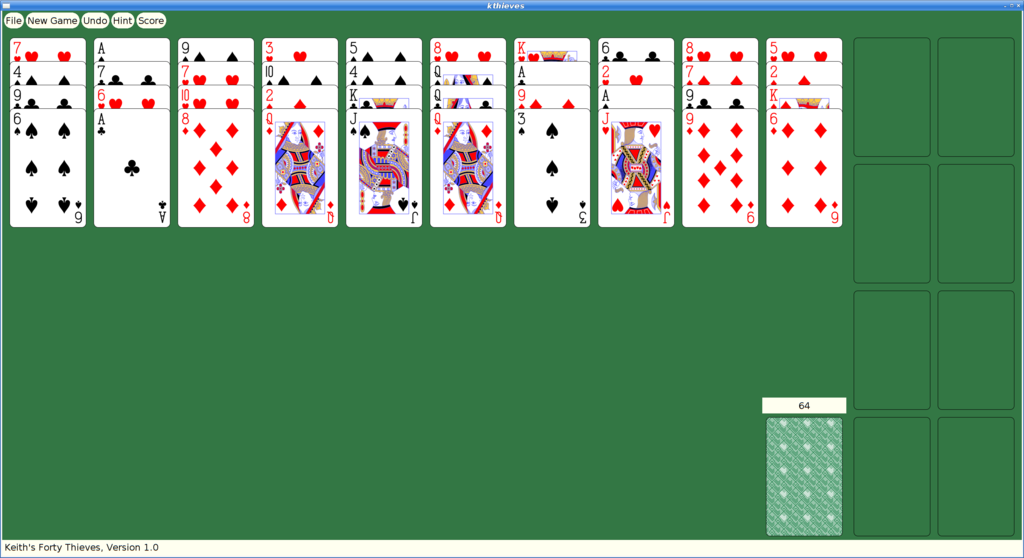
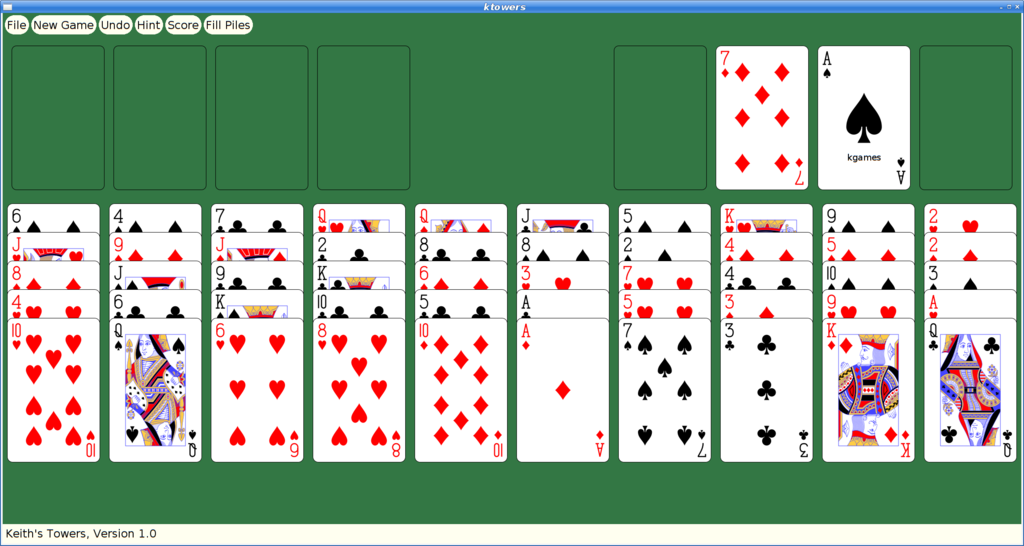



























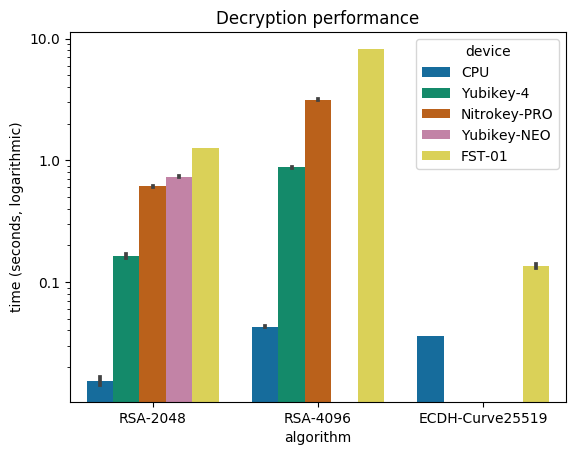
 Apologies the first blog post got sent out by mistake.
Weather comparisons between the two countries
Last year, I had come to know that this year s debconf is happening in Canada, a cold country. Hence, few weeks/month back, I started trying to find information online when I stumbled across few discussion boards where people were discussing about Innerwear and Outerwear and I couldn t understand what that was all about. Then somehow stumbled across this Video, which is of a game called the Long Dark and just seeing couple of episodes it became pretty clear to me why the people there were obsessing with getting the right clothes and everything about it. Couple of Debconf people were talking about the weather in Montreal, and surprise, surprise it was
Apologies the first blog post got sent out by mistake.
Weather comparisons between the two countries
Last year, I had come to know that this year s debconf is happening in Canada, a cold country. Hence, few weeks/month back, I started trying to find information online when I stumbled across few discussion boards where people were discussing about Innerwear and Outerwear and I couldn t understand what that was all about. Then somehow stumbled across this Video, which is of a game called the Long Dark and just seeing couple of episodes it became pretty clear to me why the people there were obsessing with getting the right clothes and everything about it. Couple of Debconf people were talking about the weather in Montreal, and surprise, surprise it was 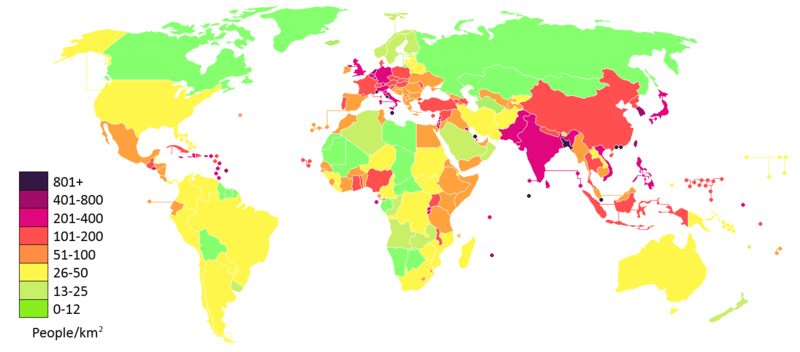 Population Density
As well in the game and whatever I could find on the web, Canada seems to be on the lower side as far as population is concerned.
Population Density
As well in the game and whatever I could find on the web, Canada seems to be on the lower side as far as population is concerned.  Rail
This is one thing that is similar in both the great countries. India has Indian Railways and while the Canadians have their own mountain railway called
Rail
This is one thing that is similar in both the great countries. India has Indian Railways and while the Canadians have their own mountain railway called  Business houses, Political Families
This is again something that is similar in both the countries, it seems (from afar) that its only few business houses and more importantly political families which have governed for years. From what little I could understand, both India and Canada have first past the post system which as shared by its critics is unfair to new and small parties. It would be interesting to see if Canada does a re-think. For India, it would need a massive public education outreach policy and implementation. We just had elections in 5 states of India with U.P. (with respect to area-size and population density) and from the last several years, the EVM s (Electronic Voting Machines) tries to make sure that nobody could know which area which party got the most votes. This is to make sure the winning party is not able to take revenge on people or areas which did not vote for them. Instead you have general region counting of votes with probably even the Election Commission not knowing which EVM went to what area and what results are there in sort of double-blind methodology.
As far as Business houses are concerned, I am guessing it s the same world-over, only certain people hold the wealth while majority of us are in hard-working, non-wealthy status.
Business houses, Political Families
This is again something that is similar in both the countries, it seems (from afar) that its only few business houses and more importantly political families which have governed for years. From what little I could understand, both India and Canada have first past the post system which as shared by its critics is unfair to new and small parties. It would be interesting to see if Canada does a re-think. For India, it would need a massive public education outreach policy and implementation. We just had elections in 5 states of India with U.P. (with respect to area-size and population density) and from the last several years, the EVM s (Electronic Voting Machines) tries to make sure that nobody could know which area which party got the most votes. This is to make sure the winning party is not able to take revenge on people or areas which did not vote for them. Instead you have general region counting of votes with probably even the Election Commission not knowing which EVM went to what area and what results are there in sort of double-blind methodology.
As far as Business houses are concerned, I am guessing it s the same world-over, only certain people hold the wealth while majority of us are in hard-working, non-wealthy status.
 Northern Lights, Aurora Borealis
Apart from all the social activities that Montreal is famous for, somebody told/shared with me that it is possible to see the Northern Lights, Aurora Borealis can be seen in Canada. I dunno how true or not it is, while probably in Montreal it isn t possible to see due to light pollution, but maybe around 40-50 kms. from the city ? Can people see it from Canada ? IF yes, how far would you have to go ? Are there any companies or people who take people to see the Northern Lights.
While I still have to apply for bursary, and if that gets ok, then try getting the visa, but if that goes through, apart from debconf and social activities happening in and around Montreal, Museums, Music etc. , this would be something I would like to experience if it s possible. While I certainly would have to be prepared for the cold that would be, if it s possible, no offence to debconf or anybody else but it probably would be the highlight of the entire trip if its possible. This should be called/labelled as the greatest show on earth TM.
Northern Lights, Aurora Borealis
Apart from all the social activities that Montreal is famous for, somebody told/shared with me that it is possible to see the Northern Lights, Aurora Borealis can be seen in Canada. I dunno how true or not it is, while probably in Montreal it isn t possible to see due to light pollution, but maybe around 40-50 kms. from the city ? Can people see it from Canada ? IF yes, how far would you have to go ? Are there any companies or people who take people to see the Northern Lights.
While I still have to apply for bursary, and if that gets ok, then try getting the visa, but if that goes through, apart from debconf and social activities happening in and around Montreal, Museums, Music etc. , this would be something I would like to experience if it s possible. While I certainly would have to be prepared for the cold that would be, if it s possible, no offence to debconf or anybody else but it probably would be the highlight of the entire trip if its possible. This should be called/labelled as the greatest show on earth TM. 


 As I was in a moving vehicle, it isn t easy to know if the imagery is at fault or was it app. , sensor of my mobile ?
Did see
As I was in a moving vehicle, it isn t easy to know if the imagery is at fault or was it app. , sensor of my mobile ?
Did see  The part about it being ugly, I dunno but have seen most java apps are a bit ugly. It is a bit generalist I know but that has been my experience with whatever little java apps. I have used.
I don t know what the reasons for that are, maybe because java is known/rumoured to use lot of memory which seems true in my case as well OR it doesn t have toolkits like gtk3+ or qt quick, although have to say that the looks have improved from before when I used it last some years ago
The part about it being ugly, I dunno but have seen most java apps are a bit ugly. It is a bit generalist I know but that has been my experience with whatever little java apps. I have used.
I don t know what the reasons for that are, maybe because java is known/rumoured to use lot of memory which seems true in my case as well OR it doesn t have toolkits like gtk3+ or qt quick, although have to say that the looks have improved from before when I used it last some years ago
 A new and unplanned release in quick succession. I have uploaded testing packages to experimental which incorporate
A new and unplanned release in quick succession. I have uploaded testing packages to experimental which incorporate 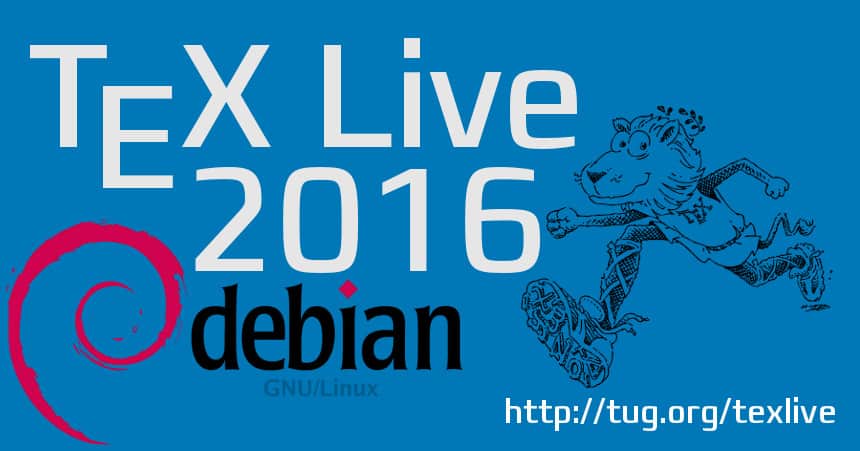 From the list of new packages I want to pick out the group of phf* packages that seem from a quick reading over the package documentations as very interesting.
But most important is the incorporation of tex4ht into the TeX Live packages, so please report bugs and shortcomings to the BTS. Thanks.
New packages
From the list of new packages I want to pick out the group of phf* packages that seem from a quick reading over the package documentations as very interesting.
But most important is the incorporation of tex4ht into the TeX Live packages, so please report bugs and shortcomings to the BTS. Thanks.
New packages

 My monthly report covers a large part of what I have been doing in the free software world. I write it for
My monthly report covers a large part of what I have been doing in the free software world. I write it for  What happened in the
What happened in the  I own a motherboard an Intel 8-Series Lynx Point chipset, with an Intel Haswell CPU supporting VT-d. This allow me to use Linux s VFIO features and assign PCIe devices to a KVM-based virtual machine. High-end network controllers goes even further with the Single Root I/O Virtualization (SR-IOV) capabilities, allowing them to be shared between to multiple virtual machines.
The Lynx Point chipset provides a total of 14 USB ports arranged in 6 USB 3.0 ports and 8 USB 2.0 ports. It would be nice to be able to assign USB ports to virtual machines. QEMU already allows to assign a USB device to a virtual machine, but it works emulating a USB controller, and the traffic goes through userland. In addition it only works for a specific known device, a random device plugged to a given port is not automatically assigned to the guest (though I guess it can be scripted using the libvirt API). The xHCI specification, the one behind USB 3.0, has been designed to also support SR-IOV, to the best of my knowledege none of them actually support it. We ll see that with some hacks it is possible to actually assign a set of USB ports to a virtual machine, with the restrictions that running ports in SuperSpeed mode is allowed only on one side, host or virtual machine.
First let s look at how the USB controllers appears on a Lynx Point chipset using
I own a motherboard an Intel 8-Series Lynx Point chipset, with an Intel Haswell CPU supporting VT-d. This allow me to use Linux s VFIO features and assign PCIe devices to a KVM-based virtual machine. High-end network controllers goes even further with the Single Root I/O Virtualization (SR-IOV) capabilities, allowing them to be shared between to multiple virtual machines.
The Lynx Point chipset provides a total of 14 USB ports arranged in 6 USB 3.0 ports and 8 USB 2.0 ports. It would be nice to be able to assign USB ports to virtual machines. QEMU already allows to assign a USB device to a virtual machine, but it works emulating a USB controller, and the traffic goes through userland. In addition it only works for a specific known device, a random device plugged to a given port is not automatically assigned to the guest (though I guess it can be scripted using the libvirt API). The xHCI specification, the one behind USB 3.0, has been designed to also support SR-IOV, to the best of my knowledege none of them actually support it. We ll see that with some hacks it is possible to actually assign a set of USB ports to a virtual machine, with the restrictions that running ports in SuperSpeed mode is allowed only on one side, host or virtual machine.
First let s look at how the USB controllers appears on a Lynx Point chipset using 



 I just released sbuild 0.66.0-1 into unstable. It fixes a whopping 30 bugs!
Thus, I'd like to use this platform to:
I just released sbuild 0.66.0-1 into unstable. It fixes a whopping 30 bugs!
Thus, I'd like to use this platform to: